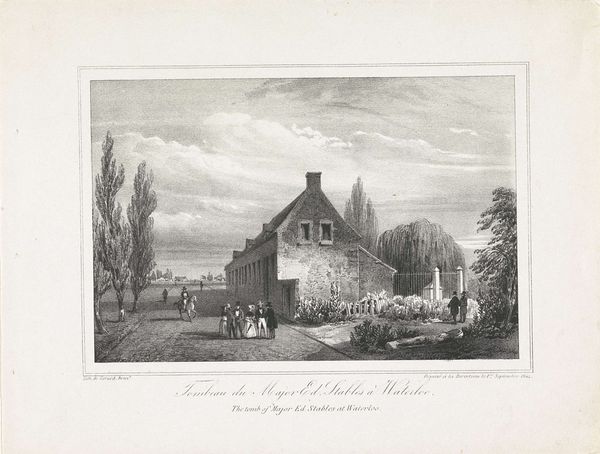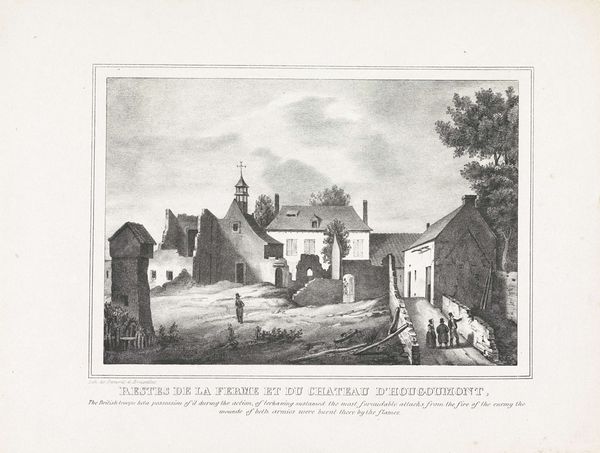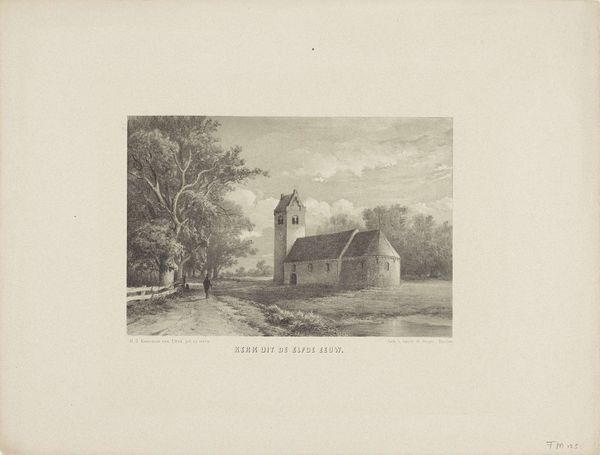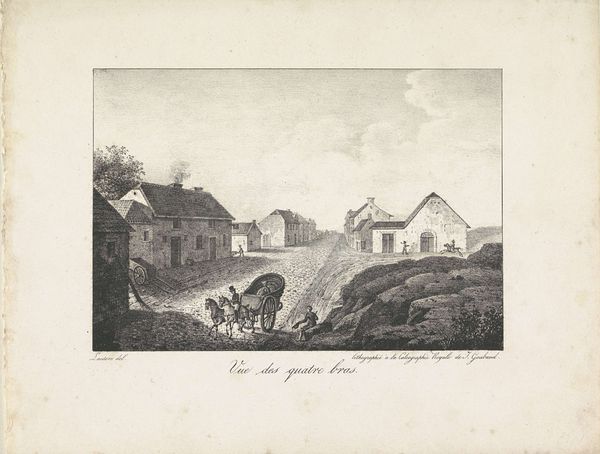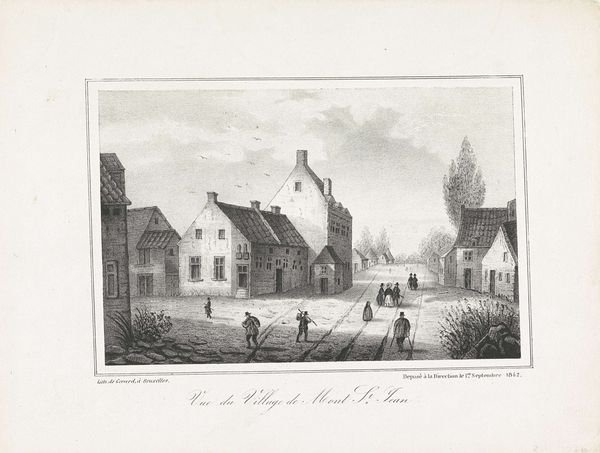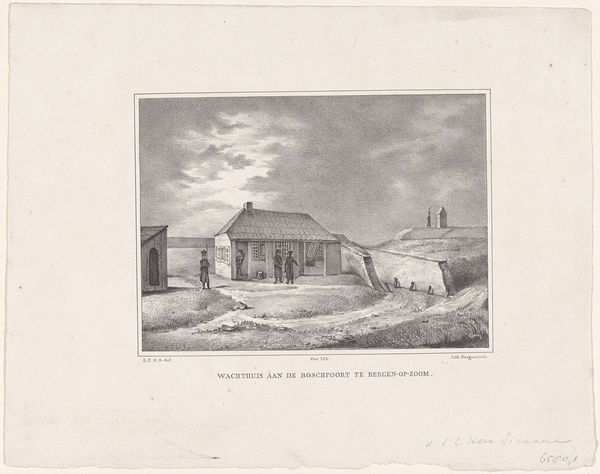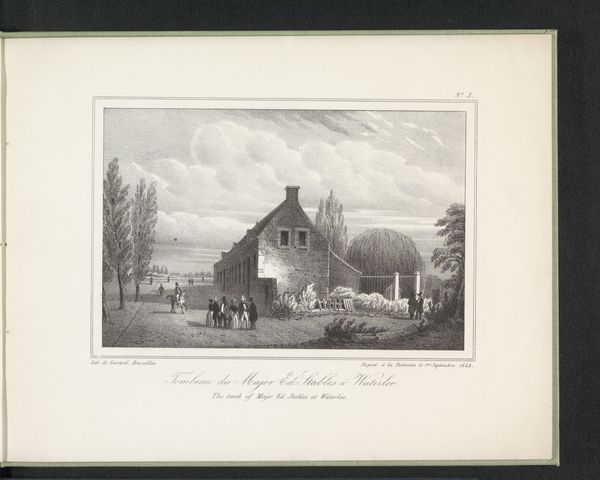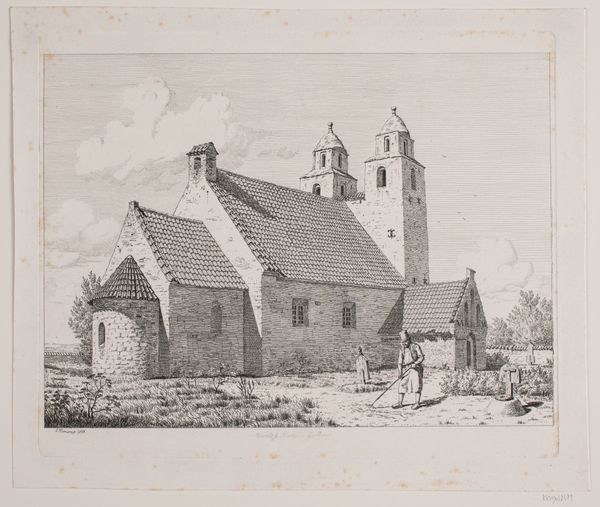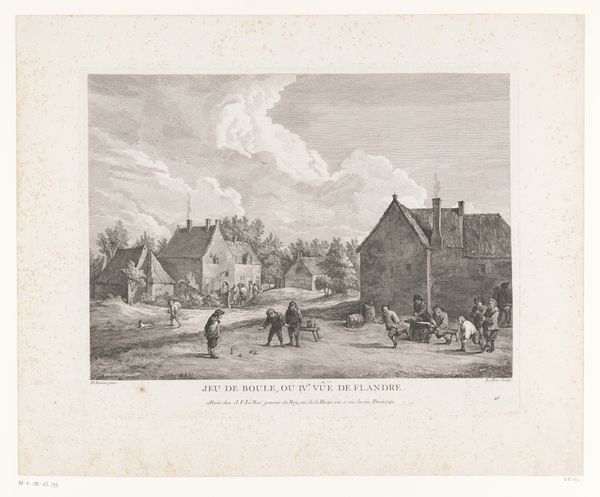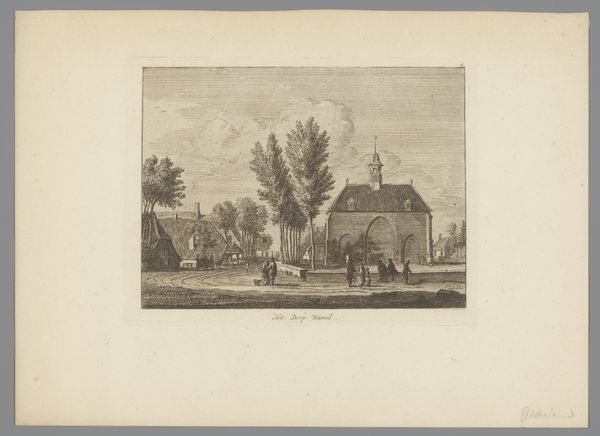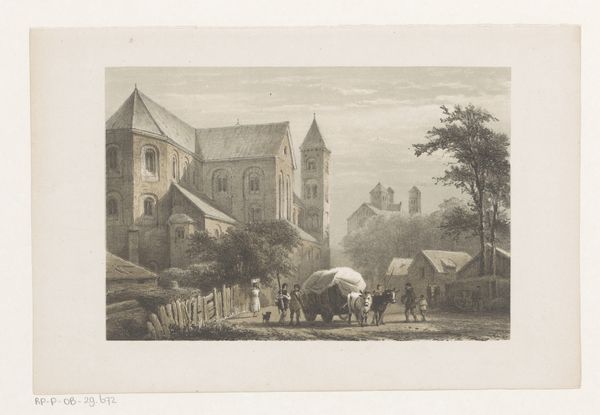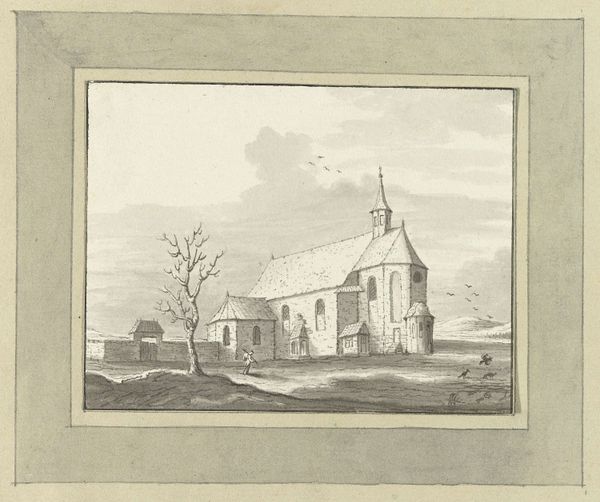
print, engraving
#
neoclacissism
# print
#
old engraving style
#
landscape
#
engraving
#
realism
Dimensions: height 213 mm, width 280 mm
Copyright: Rijks Museum: Open Domain
Curator: H. Gérard's "Hoeve in Mont-Saint-Jean," created in 1842, gives us a glimpse into 19th-century rural life through the medium of engraving. Editor: It possesses a somber charm. The limited tonal range evokes a sense of quiet, like a forgotten corner of the world captured in ink. There’s a strong sense of stillness and perhaps even the weight of time itself, like we are glimpsing the setting for a past historical tragedy. Curator: The engraving depicts a farmstead near Mont-Saint-Jean, close to Waterloo, a location laden with historical significance related to the Napoleonic wars. It is crucial to understand this piece within the context of post-Napoleonic Europe, a period of rebuilding and reassessment, and, as an image circulating in Belgium, very closely shaped by recent imperial experience. What narrative is presented by depicting this rural scene so close to a site of such pivotal warfare? Editor: Waterloo immediately shapes my interpretation. Consider the tower with the cross, presiding almost protectively over the complex. In a space marked by death and loss, its symbols, echoed in other forms and gables on the property, reflect both continuity and faith in the face of tremendous disruption. Curator: Exactly! Note also the figures populating the landscape: an affluent landowner with an equestrian escort approaching two more traditionally-dressed villagers near the main house, suggesting existing social hierarchies. These choices position the work within a very specific discourse of class and power in that period. Are they survivors returning to a changed world, claiming what remains of their homeland, or is it a depiction of Belgium itself being viewed from a critical perspective? Editor: These people have no faces: that can symbolize every person of every generation experiencing the ripple effect that tragedy sends throughout the landscape, rippling even throughout generations to come. It serves to link them to a larger narrative, to elevate beyond simply portraiture. The cobblestone street resembles the roads on the Stations of the Cross. Curator: I agree—it provides a point of entry to view not simply the image, but the culture in which it developed. This artwork, by portraying daily existence adjacent to the historic, emphasizes questions regarding cultural resilience, social equity, and the interpretation of historical events through material culture. Editor: Indeed. Looking again, I see an image pregnant with history, reflecting, reminding, and prompting reflection on events. Curator: A potent reminder that the past constantly informs and shapes our present. Editor: Art’s ability to echo those silent histories is indeed what gives it such power.
Comments
No comments
Be the first to comment and join the conversation on the ultimate creative platform.
